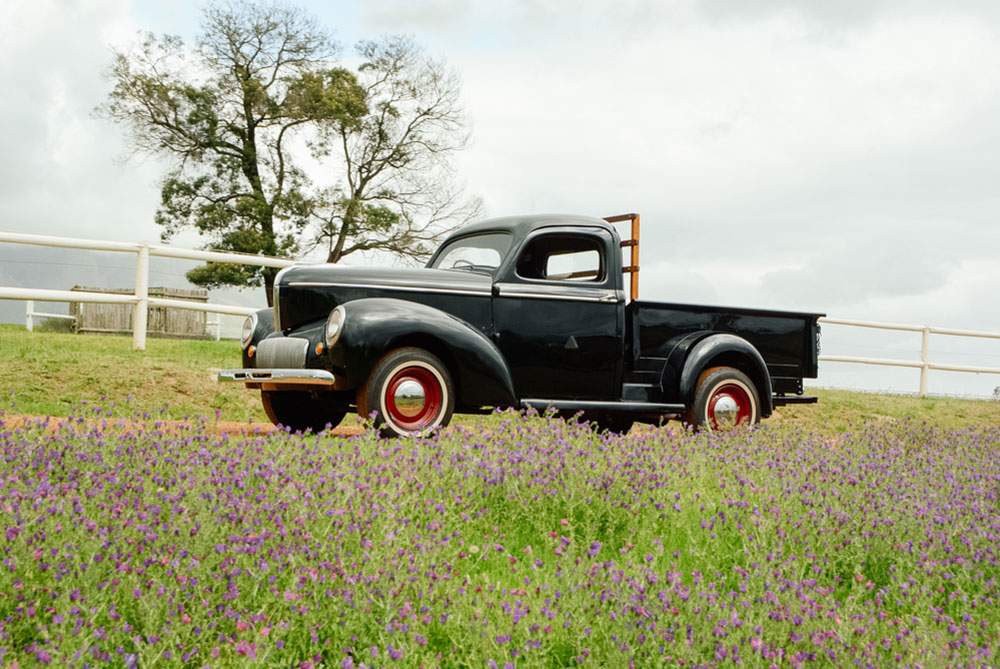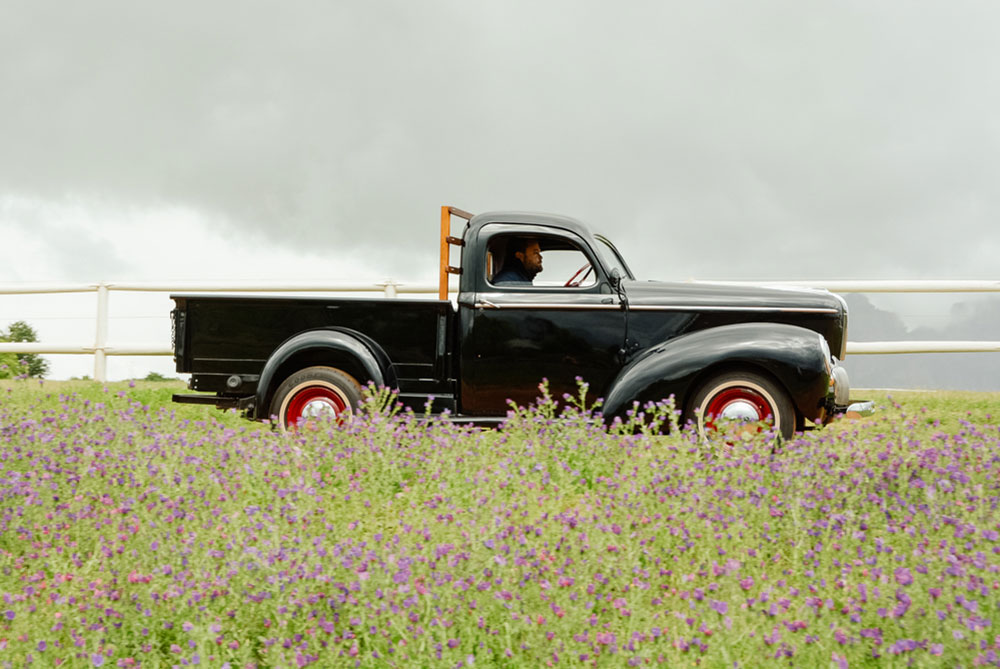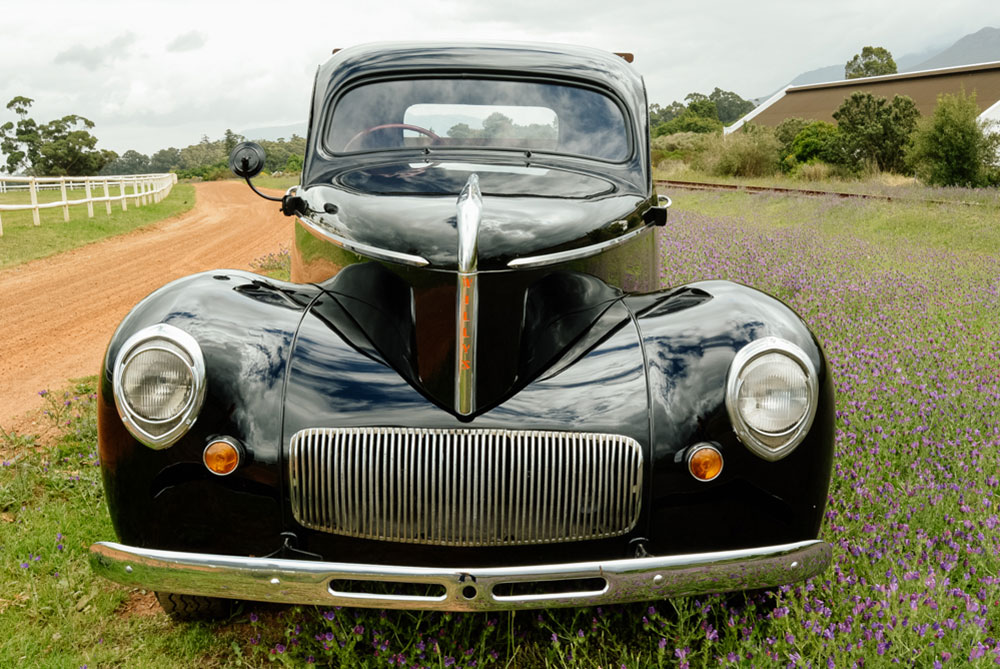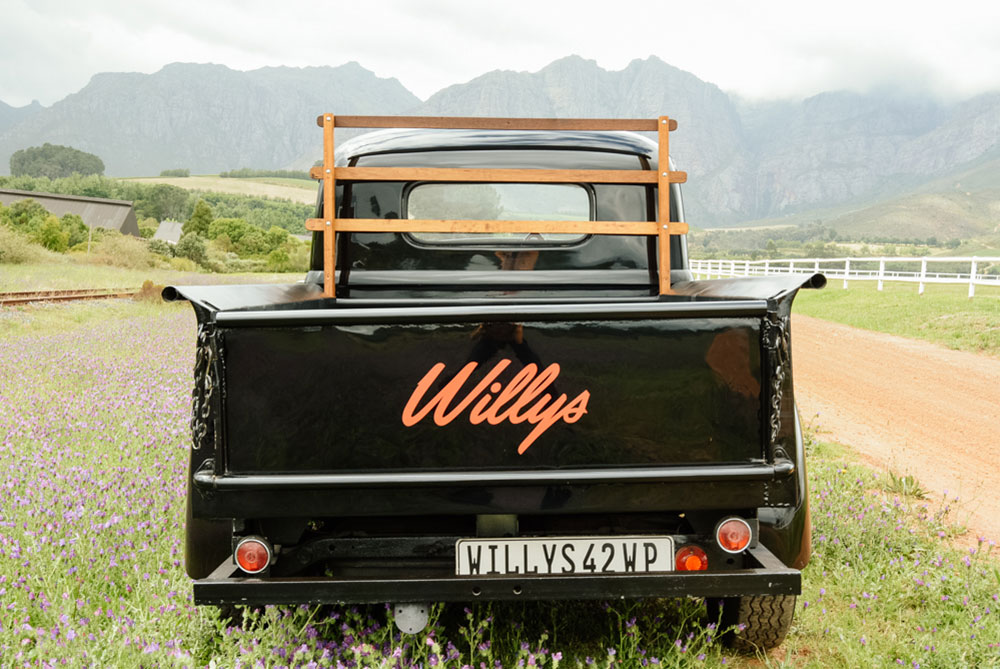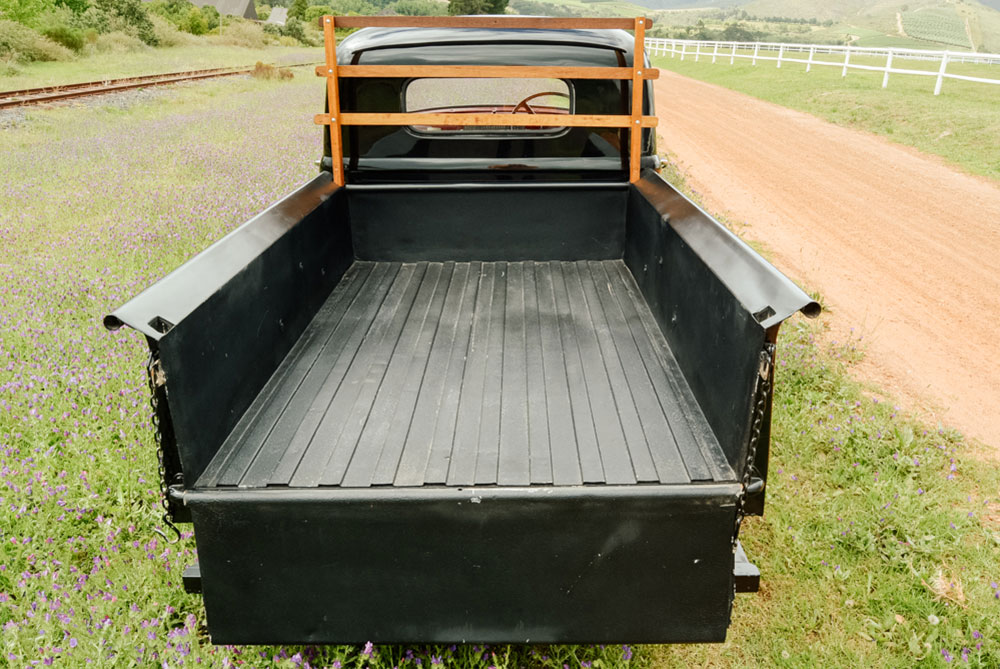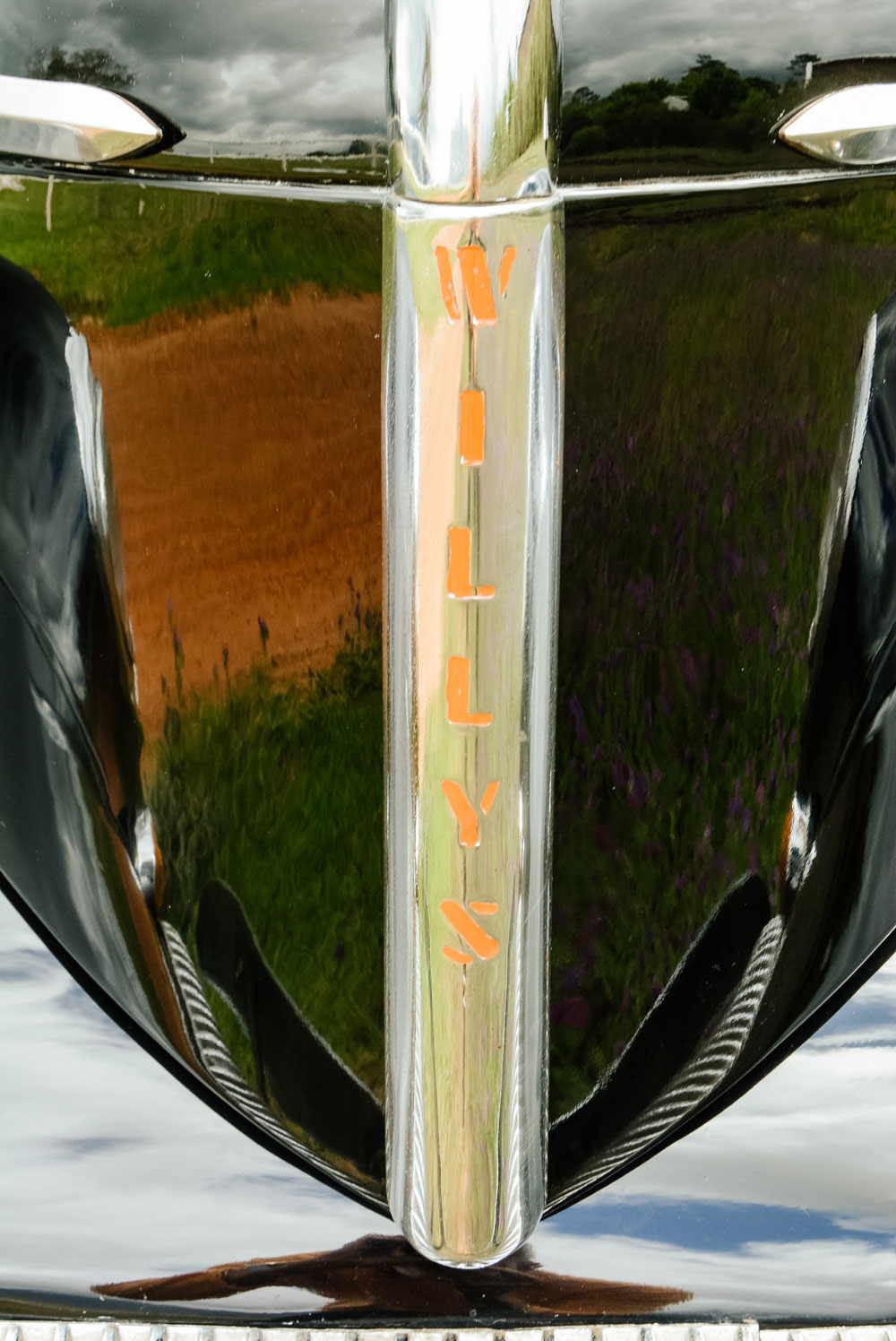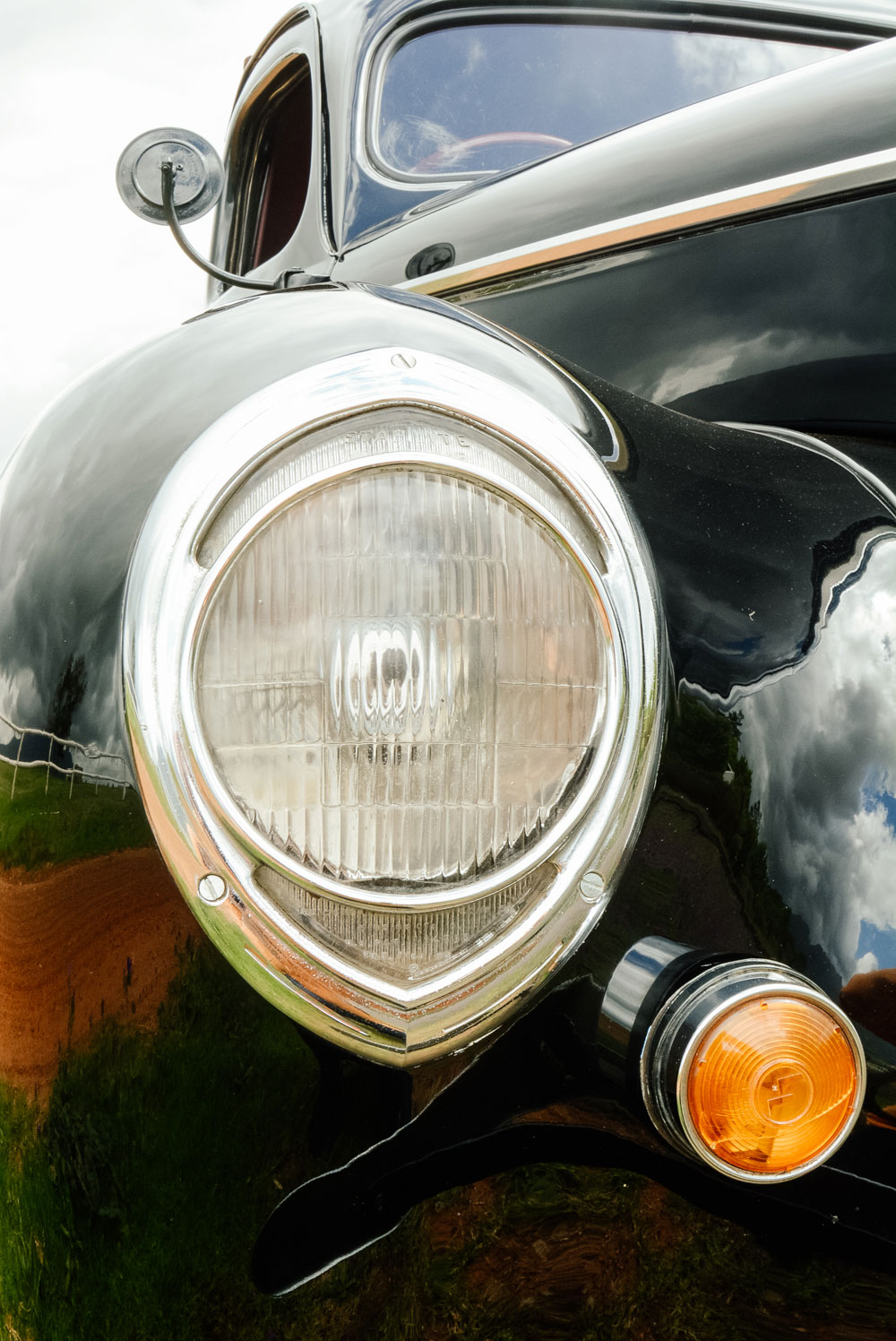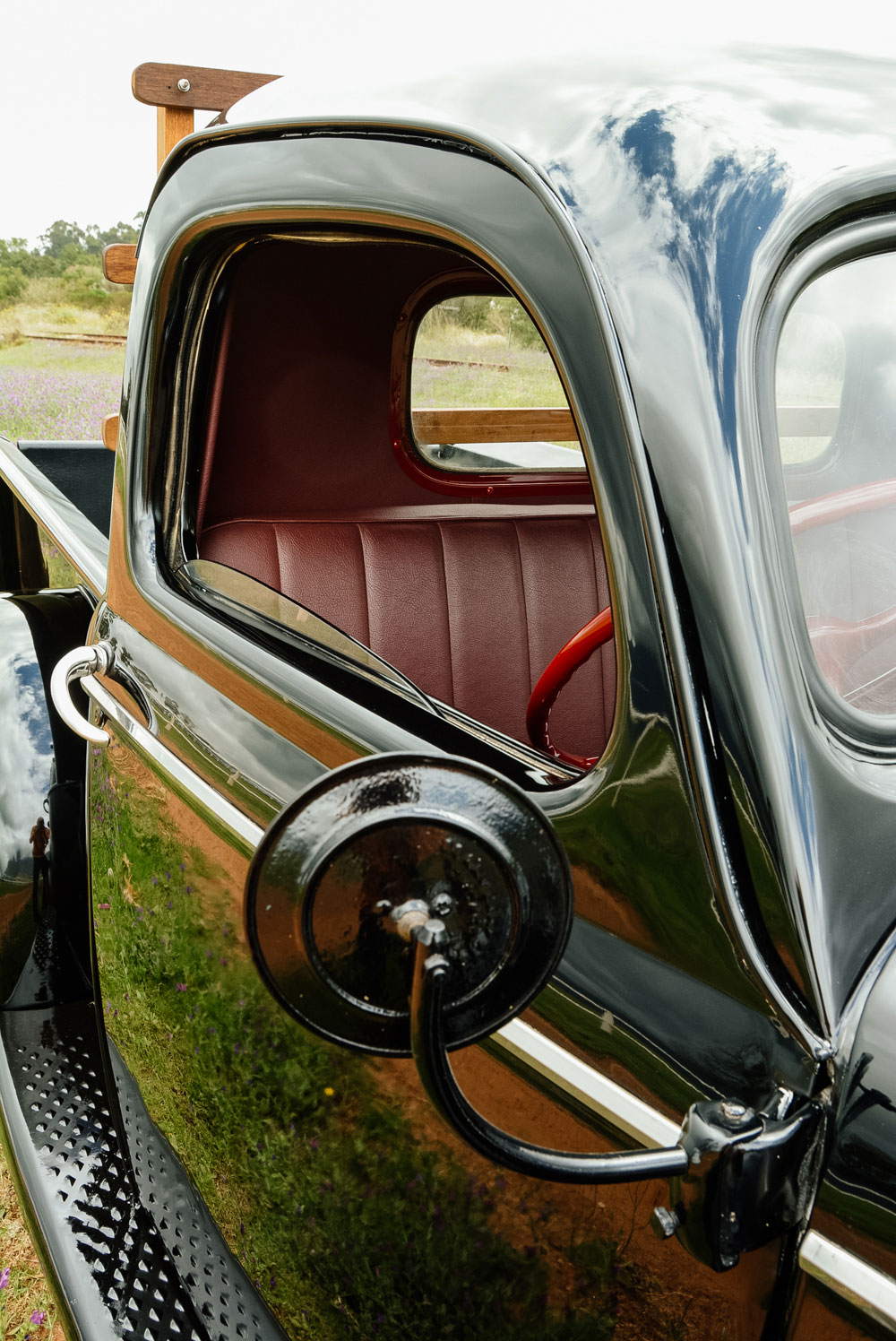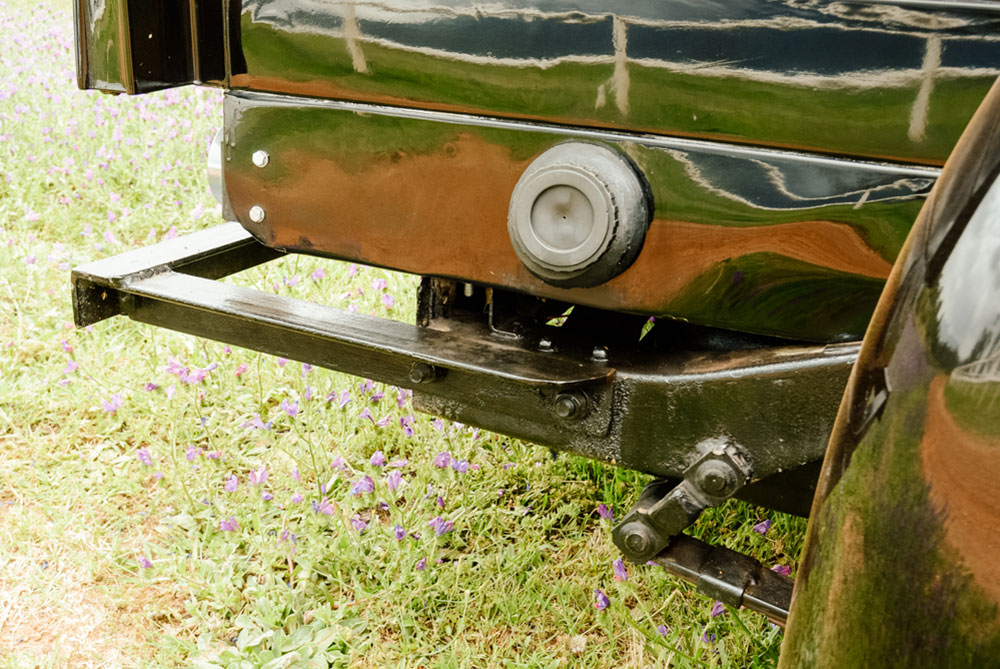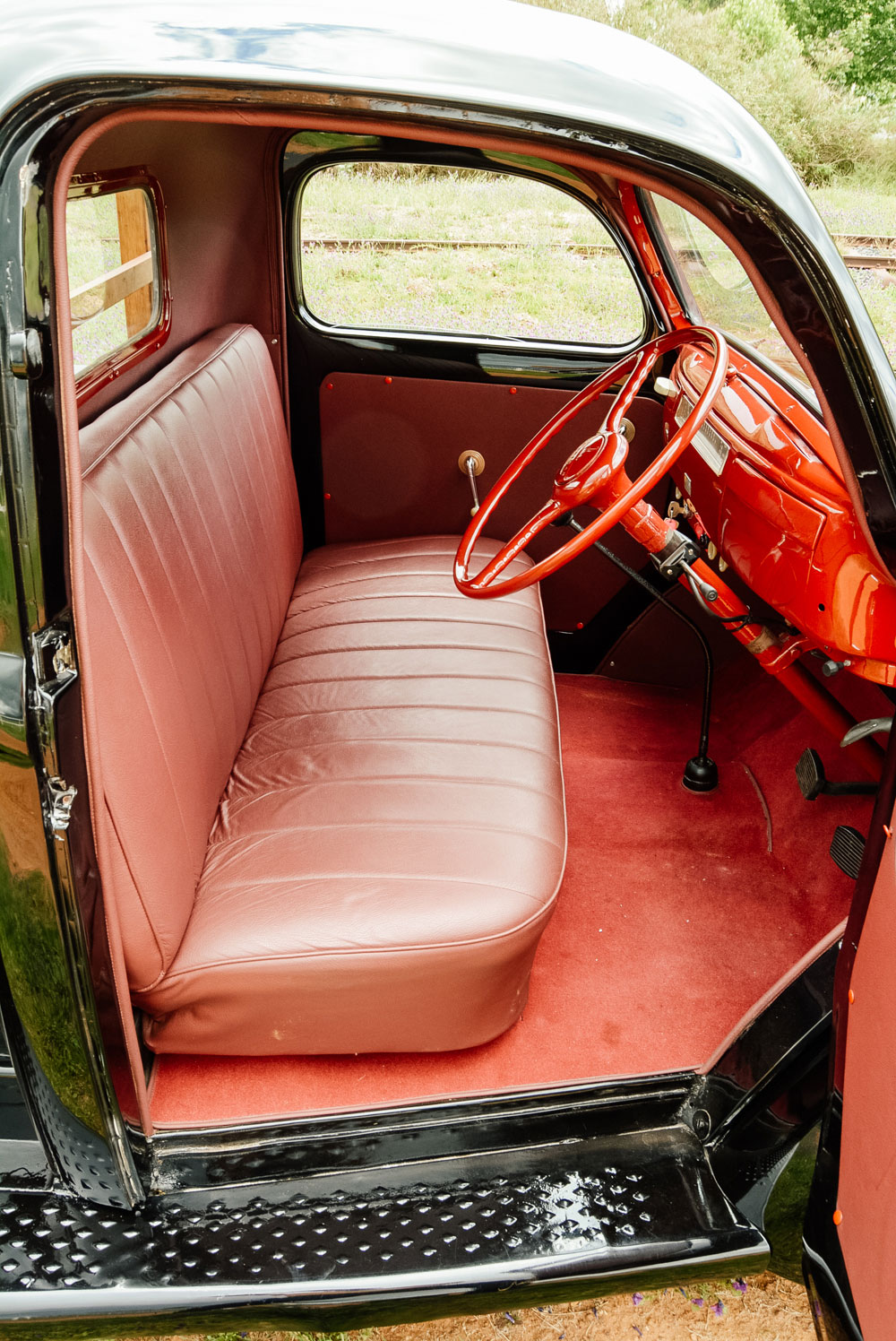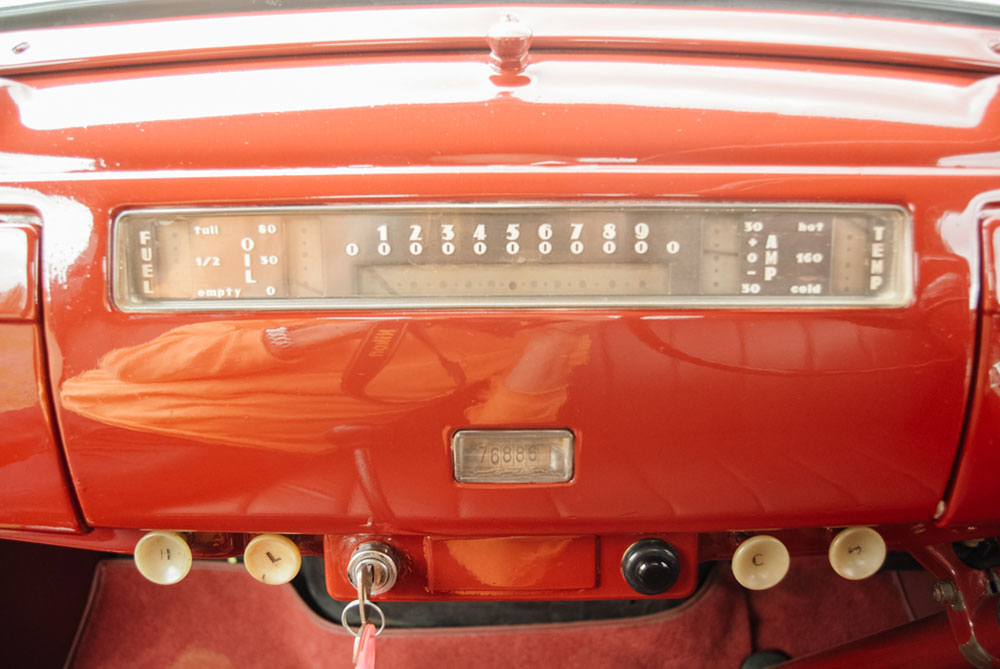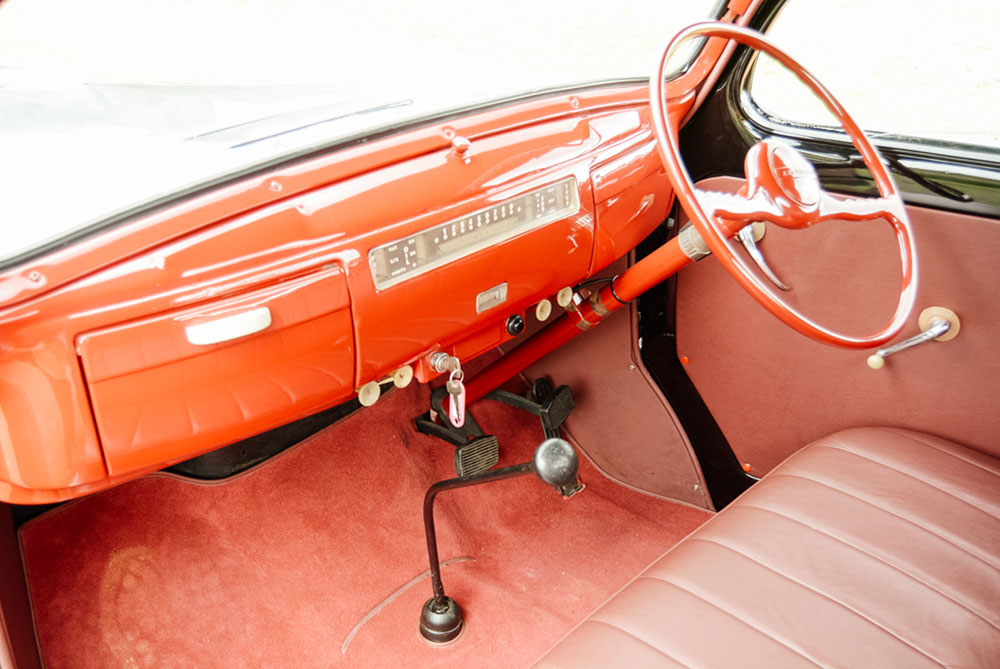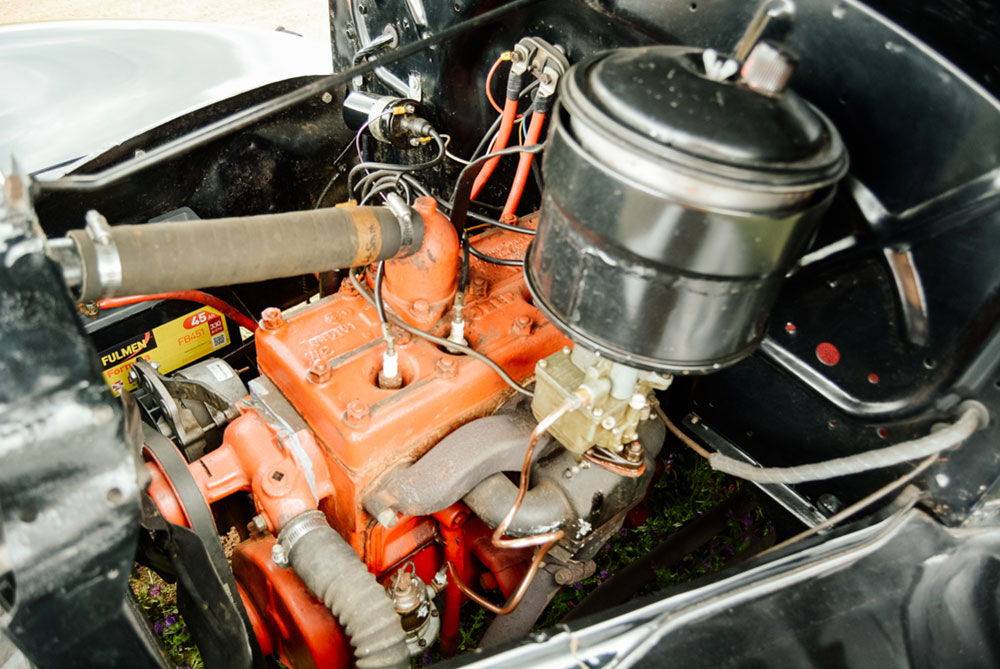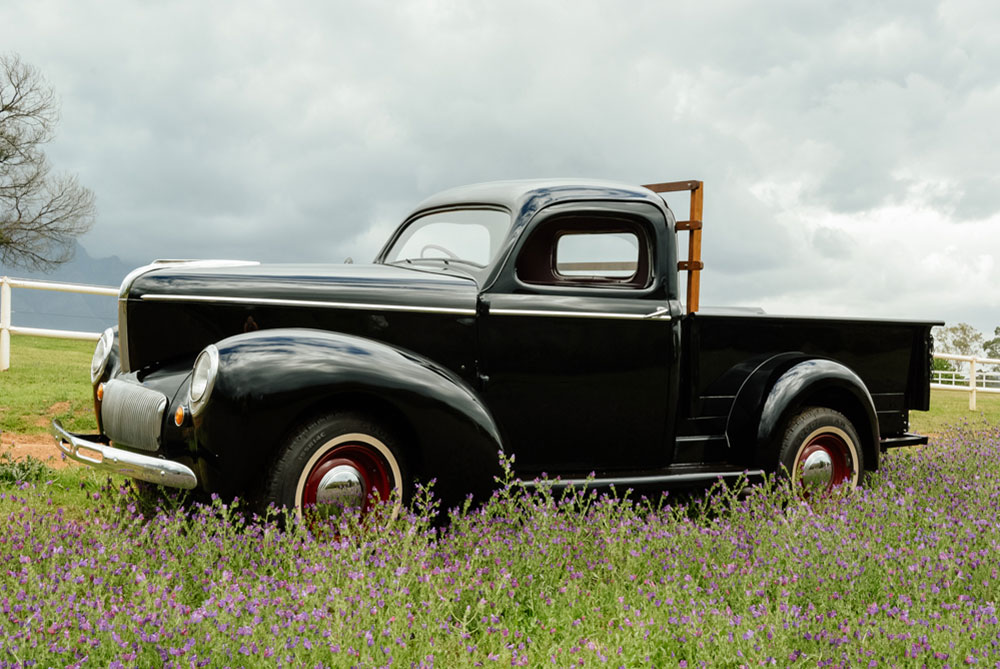
19 Dec Collection in action: Willys
Mike Monk gets the Willys with a patriotic American pick-up…
In one of those strange moments of thought association, the words of one of the most memorable songs from the 1957 musical West Side Story, “I want to be in America” played through my mind when I approached this 1941 Willys pick-up for this month’s featured drive. Why? Well, because in addition to a code number, the model range was given the name Americar ‘for patriotic reasons’, a move that was fairly commonplace at the time. Introduced in 1937, production ceased in 1942 with the USA’s involvement in WW2, but only the 1941 and ’42 models were called Americars. The three-digit model code was simply conceived; 441 meant 4-cylinder, model year ’41.
Following the death of John North Willys in 1935, under the company presidency of Joseph W Frazer, the manufacturer was reorganising itself from being Willys-Overland Motor Company into simply Willys-Overland Motors and the model was “a modern-looking, cheap, compact” answer to Willys’ struggling sales performance. Engineered by Delmar G ‘Barney’ Roos, the model range evolved through 1937, ’38, ’39 and ’40 model years to 1941 when five Speedway and two Plainsman models – coupés, sedans and a station wagon- made up the offerings, along with a pick-up as featured here. Prices ranged from $634 to $916.
Replacing the unloved Willys 77, the stronger ladder-frame chassis was fitted with telescopic shock absorbers and hydraulic brakes and the wheelbase lengthened to 2 642 mm (104 inches). The car actually handled quite well, but that was not really a factor in the 1940s. What did matter was the price, and because of economies of scale for a similar showroom price, the Willys could not compete with the likes of mass-produced, better-equipped rivals from Ford, styling details of which could be found in the Willys design.
The 1941 Americar brochure claimed the car to be the “answer to nation-wide demand for pride of appearance, pride of performance and pocketbook satisfaction”, and, naturally, was flattering in its wording. Illustrations showed the exterior, interior and dash with descriptions proclaiming the “large, roomy interior”, “clear-vision safety windshield” and “immense storage capacity”. The chassis was also illustrated and the copy boasted that the car’s “virile, zestful performance” is a result of the four-cylinder, 63 hp engine “giving smooth, fast acceleration and quiet top-speed performance”. Illustrated optional accessories included a heater, grille guard, foglamps, radio and wheel trim rings and discs. Features of the car were shown including all-steel bodies, column shifter, hypoid rear axle and XK girder frame.
Engine was a 2 199 cm3 Go-Devil inline four-cylinder L-head delivering 47 kW (63 hp) at 3 800 r/min and for 1941 was given new intake and exhaust systems and a new Carter carburettor to help improve fuel economy, which ranged from 24 to 24 US mpg (equivalent of 6,9 and 9,8 litres/100 km). Top speed was given as 75 mph (120 km/h).
However, despite the name, the Go-Devil motor proved to be unreliable and a subsequent lack of replacement and repair parts coupled with a lack of assistance from Willys turned many Americars into perfect targets for the burgeoning hot rod community. The engine was replaced with many other alternatives and the trend became so popular that nowadays it is rare to find a stock-standard Americar.
But FMM’s rare pick-up is to original spec and has an appealing workhorse look about it. A simple wood-strip cab protector is fitted, while stylish headlamp nacelles, chrome strips atop and along the bonnet and along the doors and white-wall tyres are the exterior’s only flashy items. What adds to the appeal are the disc wheels that are painted red to match the interior of the cab, in which everything is red – seat, carpet, door panels, dashboard, steering column and wheel. Oh, and so is the engine…
Not the roomiest of cabs, there is a bench seat and, surprisingly, a floor gear shift rather than a column shifter, which would make any three-abreast seating a bit more comfortable. The rectangular instrument panel has gimmicky graphics but does include a speedo and gauges for fuel, oil, amps and temperature. The driving position is a bit ‘sit up and beg’ but the large, two-spoke wheel makes for easy steering, while the clutch and brake pedals sprout from the floor at slightly odd angles. The maligned Go-Devil engine may not be particularly strong, but it propels the pick-up along with little fuss. It is easy to imagine these pick-ups running around the prairies of Middle America, picking up and dropping off all manner of farm items interspersed with trips to the town to collect groceries, attend church on Sundays and visit the annual fair or rodeo. Kinda one of the family – until the custom hot-rodders caught on to the Willys charm…
With the onset of America’s involvement in WW2, Willys had begun making Jeeps for the US Army so the 1942 Americar would be Willys-Overland final ‘civilian’ passenger car model until the Willys Aero, 10 years later. It is reported that 28 935 Americars left the Toledo, Ohio assembly line during the 1941 calendar year, ranking the model 16th in the sales charts. However, other reports state 20 000 and 30 100, while the 1942 figure has been given as both 7 000 and 11 910, but not all listings mention the pick-up…
And as a final note, if the unusual-in-SA Americar somehow looks familiar, amongst a number of film roles, a 1941 model appeared in the 1995 movie Cry, the Beloved Country directed by Darrell Roodt, based on the novel of the same name by Alan Paton, starring James Earl Jones and Richard Harris.
